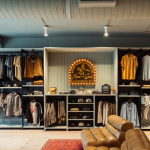Season-to-date retail sales of snow sports products through February reached $3.1 billion, up 2 percent when compared with dollars sold from August to February last season, according to the latest SIA RetailTRAK report from Snowsports Industries America. Total market projections are based on data collected from the point of sale systems of more than 1,200 snow sports retailers.
Retailers struggled to make up for slow sales in December due to the late start of the seasons snowfall. Although sales in January and February are healthy compared with the past four seasons, it has not been sufficient to make up for relatively lackluster sales earlier in the season.
- Twin tip ski sales (flat and systems combined) are up 2 percent in dollars sold to $70 million and up 4 percent in units sold to 169,000 pairs of skis sold through Feb. 28.
- Sales of alpine/AT boots, alpine boots with a walk mode and rubber/Vibram sole designed for use with alpine touring bindings, have more than doubled compared to last season. Through February, 67,000 alpine/AT boots were sold at snow sports retail shops.
- Sales of lighter, more technical AT/Randonee boots are up 44 percent in units and 60 percent in dollars sold.
- Sales of skins, used on the bottoms of skis to prevent backwards sliding when traversing or sliding uphill, are up 12 percent in units sold and 11 percent in dollars sold.
- Splitboard sales, although still a small category with 3,100 units sold through February, are up 14 percent in units sold and up 7 percent in dollars sold.
- Action camera sales are soaring, up 14 percent in units to 95,000, and up 37 percent in dollars sold to $29 million.
A late start to snowfall that depressed sales in November and December most likely prevented a palpable rebound in snow sports retail sales this season. However, sales during January and February were strong as snow finally fell and consumers returned to the slopes and trails. The cynicism that dominated the early season market after a dismal 2011/2012 season has dissipated. The mindset of the consumer heading into next season should be far more optimistic and therefore willing to spend













